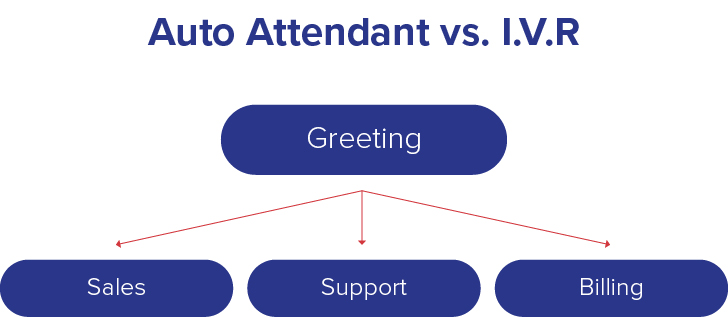The Best Way to Train and Guide Agents to Success
There is no better gauge as to the importance of customer experience when engaging with a brand’s contact centre than the millions of social media complaints that consumers have about their experience.
If agents don’t have proper training and tools, they are not only unable to do their jobs, but may be damaging your brand.
10 ways to really kick goals and create agent success include:
- Create a Plan
The value of having a well-developed and executed plan is paramount. Having a plan in place will consolidate all the learning and development required for an agent and progression within their roles. Incorporating industry best practice and key milestones is key, along with the continual updating and development of the plan to suit changing business environments and new ways of thinking.
- Continuous Training
Continuous training is key to a contact centre’s longevity and performance. Providing steady growth and development for your staff is crucial to maintaining KPIs. As technology and social circumstances change, training procedures must also keep up to date.
Most individuals need to be stimulated in their professional careers. By implementing solutions like gamification, training becomes more engaging and contact centres can deliver superior professional development. It has been shown that 94% of employees would have remained at a company for longer if their company invested more in their career development.
- Start Onboarding Before The First Call
By starting the onboarding process before an agent begins their time on the phones, they’re already familiar with the environment and are often less overwhelmed on their first day. This can include an introduction to the contact centre environment in the interview process.
According to Aberdeen Group, 83% of the highest-performing organisations began onboarding prior to an agent’s first day. Beginning the onboarding process beforehand lets managers use their time effectively by scheduling the simple and administrative tasks to be completed at home by an online automated system. By implementing an online onboarding process, contact centres can expect to see a dramatic improvement in training efficiency.
- Train and Refresh New and Existing Staff on the Power of One Principles
The "Power of One" is among the most important principles to introduce to new hires and reinforce with experienced agents. Regardless of the size of your contact centre, every agent has the power to influence customer perception, improve speed of answer, keep occupancy at a reasonable level, hold down your costs and in the end, maximize customer lifetime value. Unfortunately, many of your staff don’t realise this, so it is important to teach these principles during the onboarding process and continually refer to and reemphasize their importance to existing staff.
- Shadow Program
Creating a shadow learning program in your contact centre is a commonly used method of training new agents.
This method simultaneously achieves two important things:
1) it develops a sense of leadership amongst more experienced agents, builds employee engagement and opens doors for professional development
2) it gives agents a role model in the workforce, providing a model of their expectations and their professional pathway, while helping them learn soft skills that are harder to explicitly train.
By creating a shadow program, new agents have an opportunity to become familiar with the workplace culture. Research states that best-in-class organisations prioritise new agents and introduce them to their team early on in their training, resulting in revenue increases for full time employees of up to 17% due to its impact on employee training.
- Provide The Right Tools
Providing the right tools and technology is necessary for numerous reasons as they can significantly impact an employee’s experience of working in the contact centre. Mobile apps that enable staff to view their schedule, apply for leave and swap shifts, regardless of their location are a great way to make life easier for contact centre staff thus increasing their engagement.
Intelligent Automation can also improve the efficiency of the centre by making it easier for staff to adhere to their schedule. For example, if an agent is stuck on a call, intelligent automation can see that they are on a call and move their break to when the call ends thus removing the need for a team leader or Workforce Planner to do so. This helps improve staff engagement and efficiency in the centre.
- Clear Objectives (KPIs)
Setting clear objectives is very similar to creating a plan; it provides purpose and structure which is a key contributing factor to motivate employees and monitor progress. When setting out agent KPIs, they should be SMART (Specific, Measurable, Achievable, Relevant and Timely) and clearly understood by the agent. By developing short-term and long-term KPIs, agents are provided with the necessary framework and guidance to accomplish high performance results.
- Feedback
Providing agent feedback is one of the most crucial aspects of any agent’s training. Without the correct feedback and guidance, agents will continue to use the knowledge they initially obtained rather than learning new things and adopting new approaches to improve efficiency and optimise performance. It’s found that 82% of employees appreciate both positive and negative feedback and use it to improve their performance and work towards exceeding customer expectations. Keep in mind that too much negative feedback is not good and will affect an employee’s confidence and experience.
- Vary Your Training Methods
Incorporating different methods of training is crucial to appeal to different learning types. The four typical learning methods are visual learners, auditory learners, kinaesthetic learners and reading/writing learners. Each of these learning methods responds differently to various training. As a result, it’s important to develop a comprehensive training program to utilise a wide range of learning methods.
- Team Meetings
Hosting regular team meetings is vital to building teamwork and collaborative learning in any workforce. Jobs within the contact centre industry can typically feel isolated by constantly responding to customer queries with minimal time for cross-team communication. Hosting meetings provides another dimension to an employee’s development within their role and further delivers the foundation and substance to build an inclusive and engaging workforce culture. It’s important to note that contact centres should give meetings a purpose and structure. Surveys show that 55% of people have wasted one or more hours within their week on pointless meetings, which is why it’s important to plan and create a meeting agenda.
How to Take Your WFM to the Next Level
If you’ve been in the contact centre space for more than a few hours, you’ve likely heard some version of the unofficial motto “Connecting the right interaction, to the right agent, at the right time.” For the workforce management team, we know that means we need to accurately forecast the interactions, schedule the agents, and real time manage the environment. These elements are the basics of WFM, but for some of us we’re wondering what else there is. What does it take to get to the next level of WFM?
We could look at “right interaction” and go after a stronger phone menu or IVR options. We can better define the interactions as they come into our contact centre and route them appropriately. Or we could focus on “right time”, concentrating on our forecast accuracy and schedule adherence. Making sure we know exactly when the interactions are coming in and what our agents are doing. All of this would clearly help our organisations and provide a benefit, but I believe they miss the mark when we’re looking to take WFM to the next level. Clearly this leaves one last thing to focus on “the right agent”.
How we understand our agents often comes from our KPIs and their metrics. We define our agents as “top producers” or “needs coaching”. We see them through the lens of the organisation, and we understand which agent should get which interaction based upon the impact on the bottom line. This is a fine place to start but it oversimplifies our agents. When we only view our agents from a productivity, performance, and customer experience perspective we miss out on the information that helps our WFM team become best in breed.
To get to the next level of WFM we should be considering the lives, families, needs, and hobbies of the agents as we forecast, schedule, and real time monitor. We should graduate from simply looking at net staffing when approving/denying PTO and begin to consider why someone needs the time off. This isn’t an argument for favouritism or valuing someone’s family reunion over someone else’s yoga class. This is an argument for an understanding that our agent’s ability to perform at work is directly tied to their lives outside of work.
Maybe you understand this, but you still find yourself having to choose who gets time off. In the end, you still feel like you’re picking person X over person Y because they have a better reason. One way to avoid this is by leveraging your WFM platform to give the agents any time off they want if they are willing to pay the cost. Your time off shrinkage could include time off that doesn’t cost the agent anything, time off that costs them X credits from an internal currency, and another bucket that costs them X times 3 credits. The higher your shrinkage goes the higher the cost. This allows you to get out of the business of approving a reunion over a yoga class and instead empowers the agents to decide if their activity is worth the cost.
The key to this working though, is you must have a program that allows them to earn as well as redeem this internal currency. You could consider allowing the agents to earn credits when they sign up for voluntary overtime or voluntary time off. As they build these banks of credits they are then empowered to decide if going to the yoga class is worth 4 credits, when it took 4 VTO hours to earn those credits. When we understand an agent’s performance is tied to their lives outside of work, we need to build policies and leverage technology that empowers them to make more choices.
Changing how we understand “the right agent” should also impact how we build our schedules. Simply because our WFM system wants to build a bunch of part time or split shift schedules doesn’t mean it’s ideal for your environment. We all know that we must balance the agent desires with the business desires. However, we base our agent desires on assumption “everyone wants Mon-Fri 8am-5pm”, but do they really? One way to make sure you are taking the agent’s needs into consideration is to ask them what they need or want.
Pulse surveys are a great way to get that feedback. Small surveys done on a regular basis can help you capture the voice of the employee and respond to them before the small issues become big ones. Sometimes that will mean adjusting if we provide three 12 hour shifts or possibly more split shifts. We cannot build schedules that meet business and agent needs if we don’t even know what the agents need.
Lastly, as WFM professionals we need to be willing to step up and help other leaders in our organisation see agents more complexly. We sit at the crossroads of many teams in our organisations. Interfacing with marketing, operations, human resources, finance, and technology. If we are going to elevate our WFM team by seeing agents as more than just numbers, we will have to make sure others in the organisation are doing the same. We will have to influence those we interact with to understand the agents are bringing their lives into work and their work into their lives. It may require a significant mindset shift for some of our organisations but moving from basic to next level is rarely easy, even though it’s always worth it.
Next level WFM must move from an oversimplification of our agents and begin to seem them complexly. It sees the lives, needs, and communities of our agents and brings them into consideration when we’re forecasting, scheduling, and real time monitoring. This doesn’t mean we let the agents do whatever they want, whenever they want, but it does mean that we lean into a fuller understanding of our workforce and embrace the fact that they are more than “top producers” or “needs coaching”.
Dan Smitley
DIRECTOR OF WORKFORCE MANAGEMENT AND ANALYTICS AT WORLD TRAVEL HOLDINGS
WINNER 2020 ICMI WORKFORCE PLANNER OF THE YEAR
5 Reasons Why You Need Gamification in Your Contact Centre Training
If you’re a manager within a sizable workforce, you’ve likely heard of gamification. This new type of technology has completely revolutionised the way training and management is conducted throughout the professional careers of your agents.
While gamification has only been around for a short time and used by large scale organisations, a growing wave of smaller workplaces appear to be adopting this technology in recent years. Gamification isn’t anywhere near as expensive as it used to be, especially with more industry-specific companies focusing on providing accessible solutions. It’s now easier than ever to integrate this technology into your contact centre with immediate and impressive results.
The commitment to gamification technology from companies worldwide is incredible, as more companies place a greater emphasis on employee development. The gamification industry had a US $9.1 billion market size in 2020 and is expected to grow at an average rate of 27.4% per year until 2025.
Here are some reasons why companies worldwide are choosing to invest in gamification and incorporating them into their training and development programs:
Encourages Ongoing Development
One of the best ways to build agent engagement is to offer continuous training and development, showing that growth and promotion are always on the horizon. Performance tends to drop when people feel that they are in a rut and not developing further.
Investing in gamification enables agents to undergo a more engaging form of training, encouraging them to develop further through their professional careers. 74% of employees believe a lack of continuous training is their most significant hurdle to reaching their full potential, demonstrating the void that gamification can help fill.
Agents that have been with you for a longer time possess a significant amount of knowledge and are more critical in the future development of your contact centre. For this reason, developing a continuous, concise and engaging training plan across an agent’s career lifespan is just as important as their initial training. An investment into gamification for ongoing training is a direct investment to growing the depth of knowledge in your contact centre.
Builds Engagement
Because certain aspects of the contact centre industry can become quite numbers-driven and repetitive, managers cannot understate the value in building agent engagement through alternative means such as gamification and non-work-related activities.
Gamification presents a whole new world of engagement. 83% of employees who undergo gamified training are more motivated at work, bringing instant improvement to several baseline KPIs. Humans naturally tend to respond higher to visual movements rather than static reading or listening to an audio presentation, and it’s this behavioural pattern that gamification appeals to, and how engagement is built.
Offers A Change of Pace
Incorporating gamification into your contact centre as part of a continuous development plan allows the pace of an agent’s work to vary. Because functions within the contact centre industry are very time focused and micromanaged, agents are more susceptible to burnout. Altering pace and tasks for agents is another means to building employee engagement.
Variation is all that’s commonly needed to build engagement. It might be taking an unexpected day off, a surprise work lunch or some other means of changing up the work cycle. While all of these tasks to build engagement are cards a manager can play, they all deviate from getting work done. Gamification alternatively allows for variation in workplace activities whilst remaining on task and providing some direct benefit to the contact centre. A survey by TalentLMS shows that 49% of employees tend to get bored with non-gamification training, illustrating that rote learning can be counter-intuitive due to its low engagement.
Better Training Results
Gamification based training appeals to a large base of learning styles and makes for higher engagement due to requiring input from the user. It’s this interactive mode of engagement in gamification that allows agents to receive, digest, and store more information than by other training methods.
Gamification has been highly effective at teaching and assisting agents at storing information, so much so that participants who use gamification as part of their training score on average 14% higher in skill-based assessments than those who don’t.
Demonstrates A Commitment to Your Employees
A significant factor in building employee engagement comes from the earnt respect of senior management. By managers showing they care about their agents, agents are more likely to reciprocate this level of care and feel more motivated in the workplace. This symbiotic relationship is what helps drive the achievement of KPIs and enhances employee engagement.
As most agents are looking for progression and development, an investment in gamification demonstrates a commitment to agent development, resulting in stronger performance and increased engagement. Agents value continuous training and engagement from their managers so much that in a survey, 94% of employees admitted they would stay at a company longer if they had invested in their professional development.
Building engagement as a contact centre manager is no easy feat, especially when external turbulence can impact an agent’s work performance. Whilst there are many tactics available to managers to build engagement and stimulate agents, no other solution keeps them on task and as engaged as gamification. Should you seek to develop engagement within your contact centre using gamification, speak to one of our expert consultants today.
The Needs to Know About Contact Centre Automation
The quality of service and efficiency of how a contact centre is run directly impacts its ability to be successful. Technology is always advancing so to remain competitive it is important for every organisation to regularly review the systems and processes in place to see how these can be improved.
The Genesis of Automation and IVR
Attempts to automate phone-based customer interactions have been around for decades. First-generation IVR (interactive voice response) systems were one of the first systems to automatically interact with a customer through voice recognition and/or keypad inputs. The IVR’s primary role is to automate some of the simpler tasks such as providing account details, transferring funds, or paying a bill. This type of automation allows agents to make better use of their time.
The advent of web interfaces, such as queries through chatbots or social media, means the focus is now on the entire business’ omnichannel experience. Tremendous advancements fuel today’s generation of contact centre automation in AI-powered natural language processing, sophisticated voice bots and intelligent machine learning. This has shown that humans and virtual agents can operate as co-workers helping to make the agents’ job more interesting.
How Automation Of The Contact Centre Works:
Automation within a contact centre can increase efficiency at the front-end and back-end, allowing managers and agents to make more informed decisions. Modern technology can respond to situations faster than most human counterparts, providing a competitive edge when achieving KPIs. While modern technology demonstrates impressive computing speed, its ability to solve complicated customer queries is currently limited.
Modern-day AI makes decisions and outputs based on the analysis of previous events, then makes a consolidated prediction for future outcomes. Whilst this technology has shown remarkable results at improving agent efficiency and quality of customer service, the technology displays a lacking ability to handle complicated queries or account for future events that the system has no existing experience in dealing with.
The COVID-19 pandemic placed tremendous strain on contact centres worldwide, forcing tough decisions and the need to adapt to challenging circumstances. Whilst modern-day technology was not able to predict the events of the pandemic were going to take place, it did assist managers and agents through difficult times.
Types of Automation:
Automation is primarily used in the following ways within a contact centre but is not limited to:
Chatbots and Active Listening – Chatbots are becoming one of the fastest adopted technologies in the world. This trend extends far out of the world of contact centres, with many business websites adopting chatbots of their own. Active listening is an important part of the automation process for IVR systems. Natural language processing (NLP) and natural language understanding (NLU) provides inputs into natural language generation (NLG), which delivers intuitive IVR systems and improves other touchpoints with the customer service model. IVRs can now process basic requests faster than ever while mimicking a human experience and maintaining the same level of quality. This AI technology has allowed the contact centre industry to maintain a high standard of customer service whilst also achieving higher levels of efficiency.
Robotic process automation (RPA) – This functionality automates common, reproducible agent tasks in the contact centre. RPA can be used to prompt agents to read specific verbiage or help drive call handling efficiency. Whether your agents need assistance ensuring compliance or auto-populating data from one system to another, RPA can help boost agent engagement and customer satisfaction.
Intelligent Automation – A great way to provide your staff with the help and assistance they need to provide the best service they can to your customers. This functionality can make the most out of idle time by sending activities directly to agent desktops. It integrates with your ACD and WFM tool to monitor contact centre metrics and uses this information to determine when to deliver training during the most optimal time. Using predetermined business rules, this type of automation solution prompts agents to work on their prioritised list of tasks. Examples include: 1:1 coaching, personalised training, time to read company updates or responding to emails.
Improving The Customer Experience:
Modern-day automation analyses customer interactions, agent behaviours, contact volumes and hundreds of other variables to deliver a concise contact centre operation plan to help achieve key KPIs. Points of automation such as an IVR, process and intelligent automation have enabled companies to improve their customer service, reduce shrinkage and increase agent engagement regardless of turbulence in the external environment.
The Future Of Contact Centre Automation:
Consumer demand is expected to increase dramatically; Deloitte predicts retail spending growth will reach 5.9% for 2020-21, leading to an overall increase in demand for customer service. Growth within the Australian workforce size doesn’t compare to the growth in consumer spending, meaning the contact centre industry is now expected to make more from less. Automation, through its various forms, will help greatly by removing the need for agents to do many of the simple, repetitive tasks they do today and ensuring they get the coaching and 1on1 time they need.
If you would like to find out more about automation speak to one of our friendly consultants today.
The Impact of the Wrong Software on Employee Experience
As the integration between human and technology becomes increasingly more unified and the bottom-line efficiency evolves by the day, it's essential to understand where and how this has happened. Many industries have embarked on an aggressive consolidation play to gain a larger share in the existing market.
To increase market share, software companies commonly provide end-to-end solutions to cover all aspects of a workforce's operation. This has become a widely adopted trend in the industry. However, while integration across different parts of a solution is crucial to a contact centre's performance, the value in pushing the boundaries of the 'possible' by employing best-of-breed technologies in each separate area appears to be taking a back seat.
Workflow
The common saying, "a chain is no stronger than its weakest link", is true in the current consolidation of technology providers in the contact centre industry. For instance, if your contact centre has acquired an end-to-end solution that lacks the strength it needs to have in one area, the impact will be noticeable.
Commonly end-to-end solutions result in sub-optimal performance compared to those where best-of-breed solutions have been sourced and pieced together to deliver an overall stronger solution. The idea that end-to-end solutions outperform all other options on the merit of integration is all a façade.
Impact on Employees
The employees of a contact centre are the backbone of its performance. Happy staff lead to happy customers. Thereby agents’ motivation and enjoyment at work should not be overlooked, and different factors that influence their engagement, including internal factors such as how they view their schedule and apply for leave can be significant when managing performance and employee retention.
A recent study by G2 indicates that more than half of employees are unhappy at work due to the software tools they are using and about a quarter of employees said they have considered leaving their jobs due to the software tools they are using. This study shows the importance of implementing software solutions that are designed to meet your requirements.
Employee Performance
The saying of "a chain is no stronger than its weakest link" comes in again, as the total output of a system is limited to the abilities of the weakest part.
A very traditional approach to managing a contact centre is to assume that employees struggle to increase their performance purely due to their respective effort input, when in fact, it's more likely to be the software. Thereby, a proficient contact centre manager looks at an agent performance holistically and evaluates every aspect of their agent's interaction with your workplace.
The State of Software Happiness Report 2019 shows that 95% of employees agree that the right software enables them to be more productive at work.
Contact centre solutions such as those from Call Design illustrate the power and performance capable, when sourcing the best software solutions and integrating them together to deliver a complete solution more capable than the industry’s traditional counterparts.
8 Steps to Onboarding a Contact Centre Agent
Many contact centres underestimate the importance of onboarding agents well and the challenges they encounter. Contact centres must have a structured onboarding program to ensure staff absorb all critical information, including daily duties, customer service protocols, company policies and regulations.
If your contact centre standardises and develops a comprehensive onboarding process, you can ensure every new agent is provided with a structured plan and foundation to enable them to learn and deliver the best customer experience possible.
Here are 8 effective steps to onboard contact centre agents.
1. Create a Checklist
Managers should create a checklist with specific duties and deadlines for agents to be aware of, for instance, outlining all the work that is required or due by a certain day, week, or month.
An onboarding checklist should have all the information and activities that are required for agents to complete tasks, conduct calls, and provide relevant information to customers.
2. Communicate Core Company Values
Agents must understand your contact centre and its core values to create a meaningful workplace culture that drives towards achieving the company’s missions and objectives.
Did you know only 32% of organisations communicate their core values to new agents? It’s vital to communicate your core company values when onboarding a contact centre agent. By providing agents with an insightful understanding of the company’s workplace culture, skills required, behaviour, performance expectations and methods, agents can learn quickly and optimise the customer contact experience.
3. Introduce the Team and their Role
It’s essential to introduce new agents to the team and their respective roles within your contact centre. This introduction to fellow peers enables the development of a communication network that will assist in the learning and the development of that agent whilst providing support. Developing a strong team around a learning agent assists in successfully onboarding the agent to understand the company, workplace culture, duties, and expectations from agents who conduct similar tasks.
4. Interactive Learning
To create an engaging onboarding process for your contact centre, you should adopt interactive learning spaces to transfer knowledge and provide guidance for agents to comprehend all aspects of the role. Interactive learning is crucial to any agent development, as many require more comprehensive and engaging learning modes to grasp a concept fully.
Using interactive learning within a team can integrate a social culture within the contact centre and provide a learning method that appeals to more than those who can rope learn.
5. Train with Experienced Agents
New agents can work alongside experienced agents to provide on-site training and assign tasks. This method of training is often one of the most effective methods to learn and train contact centre agents. By onboarding staff with the support and experience of other agents, new employees can learn methods and other best practices that aren’t always in the operation manuals.
6. Review Performance
Once a new agent has completed their training, they can respond to customer calls and enquiries.
It’s vital to examine their approach and their ability to navigate calls. An early performance review enables new agents to quickly evaluate if they are heading on the correct path and identify early should there be any missed information in training. Constructive feedback is the most effective method for contact centre agents to improve.
7. Check Customer Satisfaction
Evaluate the performance of your new agents through customer satisfaction. Experienced agents and managers can monitor customer feedback received over an agent’s training and an agent’s early independent days to evaluate and build upon weaknesses identified in their training and onboarding process.
8. Expectations and the Power of One
During all stages of the onboarding process, it is important to set expectations and explain the Power of One. It is easy to think that one person doesn’t make a difference in a contact centre with lots of agents, but every agent can have an impact on the service level and customer experience.
In a contact centre, first impressions are everything, and when welcoming and educating new agents, you must establish clear expectations and the best workforce management practices to exceed customer expectations.
We hope these 8 steps help you onboard new contact centre agents and prepare the appropriate information, activities, and processes to effectively onboard staff into your workplace. If you adopt an effective onboarding process, it can reduce employee turnover from 44% to 14% and improve the overall quality of customer service.
How to Select the Best Workforce Management Solution for your Contact Centre
The ability to evaluate the effectiveness of your workforce management solution can drastically improve the performance of your contact centre.
Workforce management (WFM) solutions provide contact centres the ability to forecast, schedule and track performance as well as analyse agent productivity and provide insight into shrinkage by category and interval. Using a workforce management solution can provide so much more insight than an Excel spreadsheet, helping you to streamline operations, optimise performance, and engage agents. While it sounds like a simple and straightforward process, there are many differences between the various solutions on the market so it is important that you really understand the capabilities of the system to ensure they meet the needs of your contact centre’s size, structure, and requirements.
Below are several important factors you should consider in order to get the best workforce management solution for your contact centre.
Easy Integration
Every business wants to implement the best workforce management solution for their contact centre, but it can be a disruptive process that damages your business if your solution isn’t integrated effectively. Versatile WFM solutions can integrate with your payroll to provide managers and agents not only the ability to view schedules, swap shifts, and analyse performance but also view things such as annual leave accruals and availability.
Access to data to Create and Automate Reports
Having access to the backend tables and fields can be extremely important if you want to build custom reports and use the data typically stored in a workforce management system for other reporting requirements. Ensuring your system provides this functionality is an important consideration. Open APIs
The ability to automate processes to export or import information can also be an extremely valuable timesaver.
What-if Forecasting and Scheduling Capabilities
Workforce Planners often need to test out different situations in both forecasting and scheduling. What if your service level changed or you received double the contacts for an ongoing period due to changes in lockdown rules? Having the ability to easily test out different forecasting and scheduling requirements for the same date ranges, without overwriting your existing information is an essential feature that must be standard in a good workforce planning tool. The right reporting solutions and dashboards that can display key performance indicators and performance outcomes.
Ability to Plan for Different Types of Contact
Workforce Planners no longer only plan for inbound voice calls. As the complexity of customer service increases, so too does workforce planning and the variety of channels that you need for forecast and plan for. Understanding how your selected tool can handle each channel, should be an essential part of your selection process. Good workforce planning tools can be used at an enterprise level to forecast and schedule for the following:
- Inbound voice
- Outbound
- Chat
- Social Media
- Back Office Processes
- Branches
Ability to Plan and Track where your Staff are Sitting
The aftermath of the Covid pandemic is that many organisations need to be able to track where staff are sitting when they come to work or be able to report on who is working from home and who is in the office. A strong workforce planning tool can help with seating plans and allocation of seats with social distancing as well as help you track and easily report on where your staff are each day whether that be WFH or in the office.
Agent Self- Serve Capabilities
Providing staff with the tools to view their schedules, swap shifts, apply for leave and view how they are performing against set KPIs is an important part of engaging staff and making them feel empowered. Being able to do this from anywhere, on their phones, is an additional benefit.
When selecting a good workforce planning tool, it is important to understand the self-service capabilities for both agents and team leaders to make sure they can do the things you need them to be able to do.
Ease and Granularity of Setting up Security Levels
With different people accessing the information in your workforce management tool, it is important to be able to easily provide different roles within your contact centre with the level of access they need to each feature within the tool. Ensuring that your workforce planning tool can easily create different security profiles with the level of access you need is an essential part of selecting a good workforce planning tool.
Ability to Deploy in either On Premise or Cloud Environments
Understand your IT environment and the requirements for an on premise or cloud solution as well as the security requirements that go with that. The right workforce planning tool for you needs to meet your IT requirements.
Selecting the right tool for your organisation, requires more than yes/no answers. To really understand if a tool will meet your workforce planning requirements you need to ask to see those features in action.
Why Contact Centres are looking at Onshoring Contact Centres again
Over the past two decades, many Australian organisations have formed a large dependency on offshore contact centres mostly due to the fact that staffing costs are significantly lower than hiring staff in Australia. When the pandemic hit last year however some organisations such as Westpac and Telstra, decided to move some of their voice channels back on shore to mitigate risk.
As many countries around the world have been in lockdown, businesses that were offshoring contact centres in countries such as India and the Philippines, have had to adapt quickly and find other ways to manage customer enquiries. In line with an increased demand for local contact centres, the technological flexibility of being able to easily offer work from home opportunities especially during periods of lockdown, has made Australia more favourable than perhaps some of the developing countries. In this blog we look at why some contact centres are coming home and what market factors are driving the shift.
History of Contact Centres:
Traditional contact centres were first popularised with large businesses as an easier way to communicate with customers and address customer service complaints. These contact centres typically employed domestic agents to help handle a variety of customer service needs.
However, over time as contact centres gained significant popularity, many businesses sought to cut costs by outsourcing their contact centres to countries that could handle customer service at a much cheaper cost than domestically. For the past two decades, this has been the standard procedure for many businesses when dealing with customer service interactions.
Changes brought about by COVID-19:
With such a heavy reliance on offshore contact centres, when the pandemic hit it caused not only a great deal of stress on global trade, but a variety of structural complications for businesses with large numbers of staff working in contact centres. The sudden lockdown of countries such as India and the Philippines meant that many staff could no longer work due to poor internet in remote villages and the lack of suitable working conditions at home.
Businesses who were entirely dependent on offshore operations such as Telstra were left with a large base of customers unable to contact any support services. This has been seen across a number of large and multinational organisations. As a result, Australia, with its flexible work from home conditions, good internet coverage and the ability for staff to work from home, even during lockdowns, has become a much more compelling option.
The Aftermath:
The pandemic has impacted the way many industries structure their operations. There has been a significant shift in the mindset of companies having realised that the expenses saved from offshoring do not always outweigh the performance benefits of keeping contact centres onshore.
Furthermore, the continuing trend towards a customer focused experience means businesses now more than ever are placing a significant focus on delivering high quality customer service. The advancement of technology has also helped facilitate this change by lending a helping hand to reduce the number of staff required to offer the same or better service onshore while providing more flexibility for staff.
This can be brought about by deploying innovative solutions to help ease businesses back to onshore operations and ensuring staff are trained in the areas of expertise they need to have.
Moving forward, it’s safe to assume that the movement towards bringing some of the inbound voice, contact centre roles back onshore and mitigating risk by having staff work from different locations will continue.
10 Key Metrics and KPI's for Contact Centre Performance
The contact centre industry is the backbone of brands all over the globe. It provides the necessary contact point for customers to connect with brands, whether that be troubleshooting, simple questions or administrative needs.
Understanding how to make a profit on the double bottom line (DBL) involves employing a broad range of KPIs and key metrics to ensure a contact centre meets every need that a business may have in supporting their customers.
Here’s a list of 10 key metrics that can be used by contact centre managers to ensure the delivery of both strong customer experiences and financial performance through workforce efficiency.
1. Customer Satisfaction
According to a Contact Center Helper report, 95.7% of the 380 contact centre professionals they asked thought customer satisfaction was one of the most important metrics. Customer satisfaction is a quality-based measurement to gauge the overall quality of the delivered customer service. A strong customer satisfaction result means more customers have been satisfied with the quality of service provided.
The value of quality in a customer service experience cannot be understated. It’s shown that 67% of customers are happy to pay more for a better customer experience.
2. Service Goals
Staffing Requirements are based on service goals. How quickly you wish to answer the contacts.There are two ways of measuring this either average delay or grade of service. Average delay refers to the average amount of time a customer spends waiting in the queue for an answer from an agent whereas grade of service is the defined as a percentage of contacts answered within x seconds. A common grade of service is 70% in 20 seconds however service level goals should take into account corporate objectives, market position, caller captivity, customer perceptions of the company, benchmarking surveys and what your competitors are doing.
3. First Contact Resolution
First contact resolution refers to the percentage of people who received the necessary answer on their first contact and did not require any further contact relating to the initial problem. This metric reflects the knowledge base and expertise of the agents working in the contact centre as well as how well your customers are directed through the IVR to the appropriate agent.
The industry benchmark for the first call resolution measurement is between 70% to 75%.
4. Net Promoter Score
Net promoter score was developed by Bain and Co in 2003 and is a measure used to gauge customer loyalty, satisfaction, and enthusiasm with a company. It is calculated by asking customers one question: “On a scale from 0 to 10, how likely are you to recommend this product/company to a friend or colleague?
This metric is not as popular as it used to be as it is also influenced quite highly by factors outside the contact centre such as pricing, negative publicity in the media and overall branding.
The industry median net promoter score is +44, meaning there’s generally more positive promoter scores than negative.
5. Customer Effort Score
A customer effort score refers to the effort that a customer has given, to get a solution or answer to their desired question. This score provides an overall view on the performance delivered, the level of customer service and includes variables such as ease-of-access, wait times and more.
This metric is very similar to the customer satisfaction number as feedback is provided back to the company through a survey form from the customer. As a result, the feedback could be biased and may not accurately represent a customer's effort to obtain a solution.
6. Advisor Satisfaction
There is a famous quote by Richard Branson “Take care of your employees and they’ll take care of your business.”
Advisor satisfaction is a measure of the contact centre team’s happiness which like customer satisfaction can be measured in many ways. Tools to improve staff engagement and more frequent measurement of advisor satisfaction has become increasingly important with the rise in work from home staff.
7. Quality Score
Quality scores are a measurement of staff performance as they provide the ability to assess the overall caller experience while focusing on the conversation had with the agent. They help team leaders and managers understand where more training and development is needed for staff members and highlight those that are doing well and deserve a reward.
Calibration is key when measuring quality to ensure any suggestion of bias is removed.
8. Forecast Accuracy
Forecasting for contact volume and aligning this information with efficient work schedules is critical if you want to run a profitable contact centre so measuring forecast accuracy is a favourite for Workforce Planners.
Forecast accuracy is the comparison of forecasted contacts to actual contacts expressed as a percentage. There are two ways of looking at the forecast accuracy: If you divide by the forecast contacts you find the percent of error in the forecast. If you divide by the actual contacts, you find the percent the forecast varies from the actual.
9. Average Handle Time (AHT)
Average handling time tells you how much time on average, an agent spends working on a task. It includes total talk time + total hold time + total wrap up time and is divided by the number of contacts handled.
Average handle times may rise when there’s increasing complexity in customer queries from a new product or business change. Therefore, it may not be an accurate representation of an employee's performance. The length of AHT is dependant on what the service or product is and can vary greatly in length.
A contact centre is one of the most highly time scarce environments where every second is worth something. However, some organisations have chosen not to set this as a KPI but to measure it in the background. Unfortunately, because it has such a large impact on staffing requirements, it cannot be completely ignored. Even if it is not set as a KPI, management can use it to coach and train staff to improve the way they handle contacts to get better results.
10. Adherence
Schedule adherence is the degree to which agents do what they are scheduled to do in terms of being logged on. It is measured as a percentage of scheduled time on the phone.
For example, if an advisor is scheduled to take calls from 3pm to 4pm, but was five minutes late and takes calls from 3:05pm-4:05pm, they were only at work for 55 of their scheduled 60 minutes. This means that the advisor’s adherence percentage would be 91.6%, as highlighted below.
Adherence Formula: Total Adherent Minutes / Total Scheduled Minutes x 100
This metric is often confused with others, including conformance, occupancy and utilisation, but it is used widely in contact centres around the world.
For more information or recommendations on contact centre metrics, contact Call Design today.
How IVR’s Have Changed the Contact Centre Industry – written by Brett Redman

IVR’s…love them or hate them, they are an almost ubiquitous part of the contact centre industry and have been around for a very long time. In fact, according to Wikipedia, the first commercial IVR system was built to perform order entry and inventory control back in 1973, although the technology was certainly in its infancy, and considered expensive and difficult to implement.
Since then, the technology has come a long way, and is now pretty much considered a standard part of any contact centre that has any scale to it. The technology has also grown and changed to use Standards based programming like Voice XML, and more recently the acceptance of speech recognition via Siri and Amazon Alexa, Google etc has meant that more and more systems provide for input to be gathered via speech recognition rather than DTMF (Dual Tone Multiple-Frequency, also called Touch Tone).
There is a common misconception that IVR’s are the same as ‘automated attendant’s’. While they might these days be built using the same technology, an IVR is an application that provides information, or is used to perform transactions, whereas an automated attendant is simply built to route calls to a specific area. So, while an IVR may have an automated attendant as a front-end application, it provides much more benefit than a call steering application. For example, an automated attendant would play a message like ‘welcome to ABC company, please press 1 for sales, or 2 for customer service’. An IVR however would be set up to play a similar message, but perhaps with an additional option ‘or press 3 for self-service’. Choosing this option would allow the system to begin a dialogue that collects information from callers, such as customer number and password, and then allows suitable transactions to take place. Examples of this are in a banking environment where the IVR is used to retrieve an account balance, transfer funds, or pay a bill etc.
"While they might these days be built using the same technology, an IVR is an application that provides information, or is used to perform transactions, whereas an automated attendant is simply built to route calls to a specific area."
The Benefit of using an IVR
The benefit of an IVR over an automated attendant is that the IVR enables simple tasks, that would normally be performed by an agent, to be automated. As a result, the agent has more time to work on more complex tasks. An IVR can be used to run many hundreds of instances of the same application, therefore allowing large amounts of callers to be serviced automatically, at the same time, 24 hours a day, 7 days a week. Because they enable many more calls to be serviced quickly and at significantly less cost, you can see why contact centre managers love them.
The Introduction of CTI
When IVR’s first became commercialised, if a customer failed to complete their transaction in the IVR, and the IVR allowed the customer to be transferred to an agent (not always possible within the application, and a common complaint about IVR’s), then the customer had to begin their query again from scratch, identifying themselves again and requesting whatever it was they were wanting to do in the IVR. As a result, Computer Telephony Integration (CTI) was introduced in the early 1980’s by ROLM Corporation, a US PABX vendor. CTI allowed information gathered by an IVR application, or an agent, to be transferred to the agent’s computer, along with the telephone call so that the agent’s computer could do something with that information. This is generally known as a ‘screen pop’ and allows the call to be completed much more quickly and with a better level of satisfaction for the caller as they do not have to provide the same information multiple times. The CTI information also allowed for more intelligent routing decisions to be made.
The other cool thing about this type of technology is that it is very similar to “chat bots” and other newer automation technologies. They can all use the same basic logic structure, providing similar functionality, and using the same integration points to access information using a different input / output mechanism – IVRs using speech and voice processing whereas a chat bot uses text.
"CTI allowed information gathered by an IVR application, or an agent, to be transferred to the agent’s computer, along with the telephone call so that the agent’s computer could do something with that information. This is generally known as a ‘screen pop’ and allows the call to be completed much more quickly and with a better level of satisfaction for the caller as they do not have to provide the same information multiple times."
Considerations for use
With all this technology comes the hard part of deciding what to do with it. I come from the school of thought that says, “just because you can do something, doesn’t mean you should”. So, the first part is to decide what you want to achieve. For example, is it to reduce agent head count and cost? If so, automate every possible use case that you can. If, however it is to provide a better customer experience, then you should probably start by understanding what your customers want from an automated system. If the goal is somewhere between these two extremes, then you should be looking to automate as much as possible, while still making the experience for the customer as painless and simple as possible. To maximise take up rates on the IVR, ideally offer the customer something they can’t get any other way, such as 24 x 7 service; a shorter waiting time for an agent if they have tried and failed the self-service, or something else that is of value to your customers.
"To maximise take up rates on the IVR, ideally offer the customer something they can’t get any other way, such as 24 x 7 service; a shorter waiting time for an agent if they have tried and failed the self-service, or something else that is of value to your customers."

What are the day-to-day benefits of an IVR?
So, what is in it for contact centre agents and management? To put it simply, agents get the opportunity to spend more time doing more exciting work and less time doing the more mundane tasks. Given the cost of labour, management gets to increase throughput without increasing costs to the same extent. This level of engagement will create happier, more motivated agents, who will in turn, be better suited to serving customers. This motivation, unsurprisingly, will contribute to a more efficient contact centre and increase customer satisfaction.
If you would like us to review your IVR configuration or know more about our IVR solutions contact us today.










